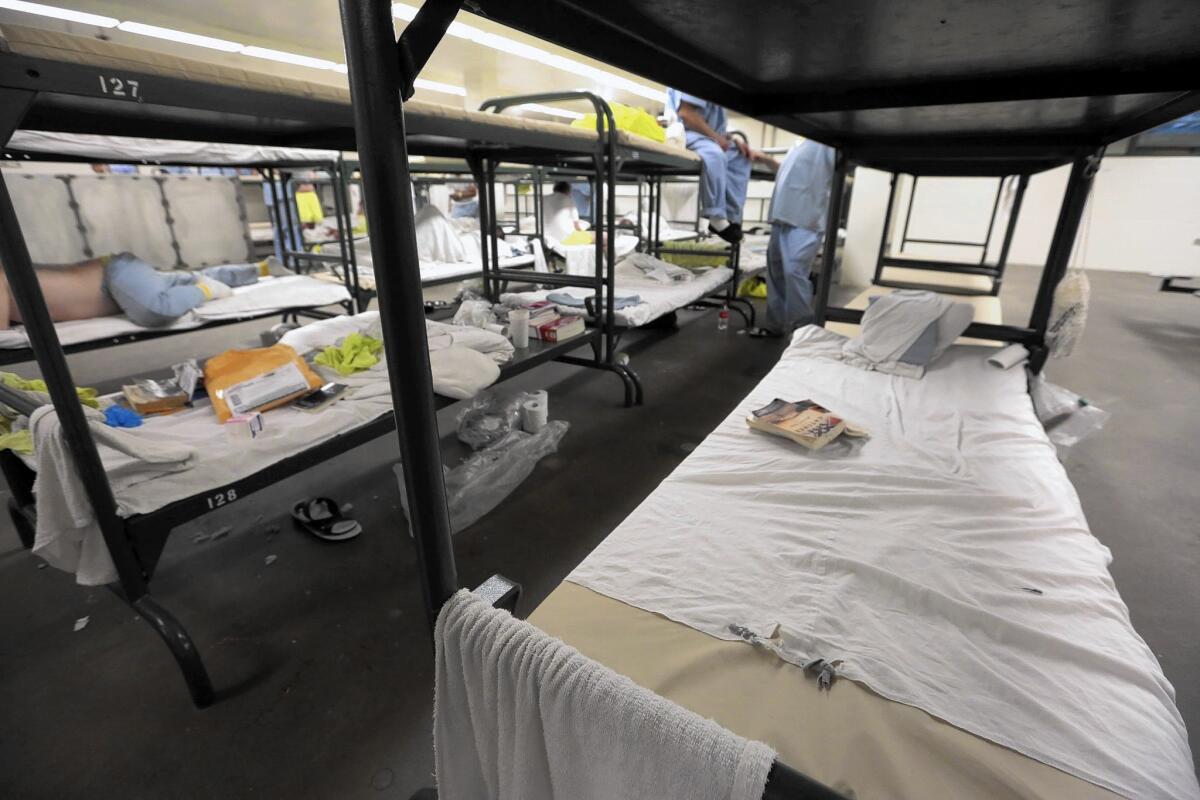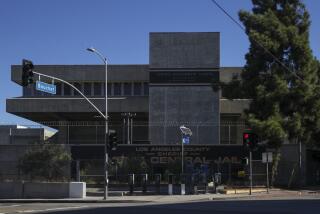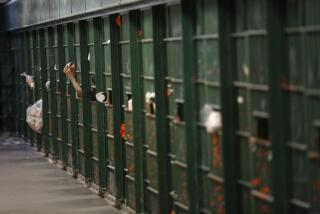Consultant’s report clashes with calls for smaller Men’s Central Jail

The current Men’s Central Jail. A consultant for L.A. County recommends that the new downtown Men’s Central Jail contain 4,600 to 5,060 beds.
A consultant hired by the Los Angeles County Board of Supervisors has determined that the new Men’s Central Jail should contain about 5,000 beds — roughly the same number as a plan that the board voted to put on hold last month.
Three supervisors, including newly elected Sheila Kuehl and Hilda Solis, want to reexamine the size of the proposed new jail, which they believe could be reduced if more inmates, particularly those with mental illness, are placed in treatment programs in the community.
The report, made public Monday and prepared by Health Management Associates, projects that the need for jail beds countywide will increase from the 17,000 inmates currently being housed to 21,599 in 10 years despite legislative changes that may drive the jail population downward.
The projected increase would be due in part to growth in the county population and also takes into account the longer sentences that inmates have been serving recently. A state law reduced penalties for some nonviolent offenders, freeing up enough beds so jailers could scale back on granting early release to other offenders.
The report recommends that the new downtown Men’s Central Jail, which would be focused on high-security inmates and those with mental health, medical and substance abuse issues, contain 4,600 to 5,060 beds.
The board is scheduled to discuss the findings at its meeting Tuesday, along with a report from a task force convened by Los Angeles County Dist. Atty. Jackie Lacey that recommends an expansion of mental health treatment facilities and housing for criminal offenders as an alternative to incarceration.
The task force’s report notes that its mental health diversion plan is not a jail size reduction plan and that the need for jail beds may not significantly decrease.
Also on Tuesday, the board may finalize an agreement that would impose federal oversight on a series of reforms for the treatment of mentally ill inmates after a surge in suicides that federal officials called preventable.
Supervisor Mark Ridley-Thomas said in an interview Monday that the county must invest in community mental health treatment. He plans to recommend that an office of diversion services be established as “a companion piece to any jail modernization plan.”
He would like to delay a decision on the size of the jail until the diversion component is more developed.
“I would think that spending billions and billions of dollars on jail construction and relatively little with respect to diversion is not the proper way to proceed,” Ridley-Thomas said.
Last year, a divided board voted to move forward with a $2-billion plan to replace the aging, dilapidated Men’s Central Jail with a two-tower, 4,860-bed facility.
Last month, Kuehl and Solis, who were elected in November, joined with Ridley-Thomas to put a halt to the plan for 45 days and look more closely at the size of the new jail and community treatment alternatives that could reduce the need for jail beds.
Sheriff’s officials, who had proposed a scaled-down 3,900-bed facility, expressed concerns that the delay could jeopardize state funding for the project.
Sheriff Jim McDonnell said in a statement Monday that he supports more mental health diversion programs as well as more training for law enforcement officers to deal with mentally ill suspects.
“Our jails simply are not the best place for low-level offenders who often would be better served by community-based treatment options that can address the underlying problems, while still maintaining community safety,” McDonnell said.
Peter Eliasberg, legal director of the ACLU of Southern California, criticized the consultant’s jail size projections as woeful and containing serious flaws.
More money should be channeled to treatment programs rather than jail construction, said Eliasberg, who supports a smaller jail.
Twitter: @cindychangLA
ALSO:
How bad was L.A.’s smog when Barack Obama went to college here?
Construction worker dies after bee swarm attack in Riverside
Lone gray wolf sighted in Siskiyou County
More to Read
Sign up for Essential California
The most important California stories and recommendations in your inbox every morning.
You may occasionally receive promotional content from the Los Angeles Times.











